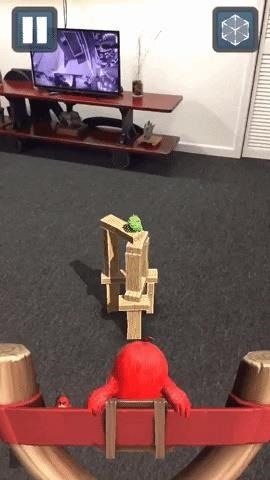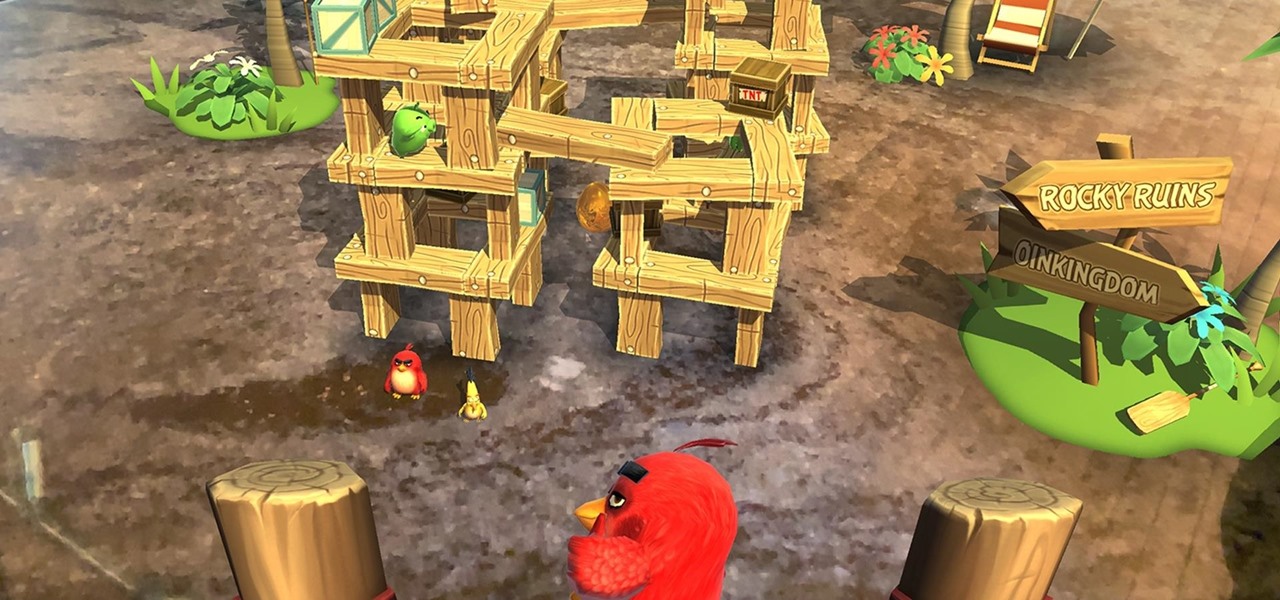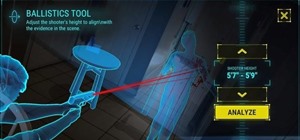Finland-based Rovio, one of the pioneers of mobile gaming, is now ready to break new ground in augmented reality with its Angry Birds franchise.
Along with its AR development partner, Sweden-based Resolution Games, the publisher is following up Angry Birds FPS: First Person Slingshot for the Magic Leap One with a return to its mobile roots in Angry Birds AR: Isle of Pigs, which arrives on the App Store for ARKit-compatible iPhones and iPads on April 29.
Next Reality recently had the opportunity to hit the practice range with a pre-release build of the title and decided to see how it compares to its AR predecessor for Magic Leap.
The app is free and does not include in-app purchases, so Unity Ads serve up the sole monetization avenue for the game makers. When you fire it up, the game launches with 40 levels, but more will arrive at a later date.


This edition of Angry Birds immediately itself apart from other mobile titles. Instead of presenting a standard mobile user interface and then transporting players into augmented reality to play the game, this game's entire UI (after the game studio logos are displayed) exists in augmented reality.
Players are thrust into the experience of scanning for surfaces from the start; as such, the game takes extra steps to ensure that players find a suitable location for anchoring the game in the real world.


The premise of the game, as always, is the same: Players sling their furious feathered friends at makeshift forts built by green pigs in the fewest turns possible in order to earn coins to unlock additional levels.
Visually, the augmented reality experience for the iOS edition is very similar to the Magic Leap version, as players must walk around the virtual fort in their physical space in order to find weak spots in the structures and try bring them down in one shot.


During game play, the experience wastes no time trying to impress upon players that position is key, as the second puzzle of the first level requires players to find a hidden opening at the rear of the structure in order to hit a box of dynamite and topple the entire structure with one shot.
But there are some key differences versus the Magic Leap experience. For instance, ARKit does not quite have the spatial computing capabilities of Lumin OS as of yet, so content for Isle of Pigs does not have the environmental awareness or occlusion of FPS. So, instead of projectiles bouncing off walls, or pigs rolling off tabletops, players may observe characters or objects disappearing into the floor, or flying through real world obstacles.


Also, while Magic Leap's 6DoF controller acts as a virtual slingshot, the iOS version overlays the slingshot onto the foreground of the camera view, with players swiping downward on the screen to arm their weapon. And, actually, my limited experience with the mechanism was slightly more familiar and comfortable than with Magic Leap's controller, where my aim was not nearly as accurate.
Another contrasting point between the iOS and Magic Leap versions is that ARKit can perform outdoors. (Sure, Magic Leap can work outside in limited conditions, but it is not built for the outdoors.) Although I'm working with a pre-release build, the app nevertheless had a bit of trouble tracking the ground outside. But, once it got its bearings, the level remained stable throughout the level.


Ultimately, as with most mobile AR games, the experience begs to be played with a wearable headset rather than a small, handheld window. AR does add another dimension to the familiar gameplay, but it's just a bit unnatural to walk around the game space while holding a device at eye level.
However, Rovio and Resolution are on the right track with the franchise, as it's not just a mobile game ported to AR for the sake of being in AR. The game is fun to play and uses immersion as an in-game tool, forcing players get up, move around, and possibly even contort their bodies in order to succeed.
It's this kind of game design that will be key to evolving games for the AR hardware to come. Therefore, in the meantime, these mobile experiments are great practice for the future of gaming.
Update: The app is now available for Android devices as well via the Google Play app store.

Just updated your iPhone? You'll find new emoji, enhanced security, podcast transcripts, Apple Cash virtual numbers, and other useful features. There are even new additions hidden within Safari. Find out what's new and changed on your iPhone with the iOS 17.4 update.
























Be the First to Comment
Share Your Thoughts